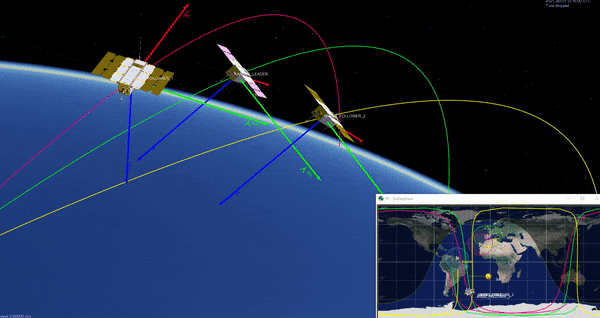CubeSats are taking on more and more responsibility for remote monitoring of the Earth. As they become more ubiquitous, they will also gain more varied propulsion systems. Or, in the case of a new set of monitoring CubeSats from INTA, Spain’s Institue of Aerospace Technology, no propulsion system at all.
The Advanced Nanosatellite Systems for Earth-observation Research (ANSER) is a set of three CubeSats designed to monitor the reservoirs and lakes of Iberia, the peninsula at the end of Europe that Spain is a part of. In an inspiring bit of space exploration initializing, It also happens to take its name from the Spanish word for wild goose.
A goose is a particularly apt comparison for the satellite because they will use wings instead of a propulsion system to fly in formation. ANSER is made of a set of three satellites, each of which will be spaced about 10 km apart from each other. Not quite as close as a typical flying-v formation, but still not too far when you consider that they will orbit at a height of 500km from the ground anyway.

Credit – INTA
ANSER’s wings will deploy after the CubeSats are launched on the Vega flight VV23, which was just delayed. Mission planners expect the CubeSats to take around 72 hours to navigate into the final positions after deployment. But how would wings work as a navigation system in space?
It turns out there’s a tiny bit of atmosphere, even at a 500 km orbit, and the wings will use the drag and lift forces provided by that atmosphere to maneuver their satellites into position. Ground controllers will use a special set of algorithms to perform a set of “Differential Lift and Drag” maneuvers that will be specific to each cubesat and its local atmospheric conditions.
Once in their orbits, ANSER’s satellites will start taking hyperspectral images of its target lakes and reservoirs. Each cubesat contains part of a hyperspectral imager called CINCLUS, allowing them to take snapshots of the ground from near-infrared up through visible light at about 60 m of resolution. With that capability, these relatively inexpensive CubeSats should be able to track water levels and look for things like algal blooms, which could be potentially dangerous in reservoirs.

Credit – ESA-CNES-Arianespace/Optique video du CSG
A critical aspect of this chosen mode of passive propulsion is that it decreases the lifespan of the mission. However, ANSER’s developers don’t necessarily view this as bad. With the dramatic pace of increases in hardware capabilities and decreasing launch costs, they could launch a new and improved version of the CubeSats around the 2-3 year time frame when the old ones will begin to deorbit.
For right now, at least, the whole process is on hold until the VV23 gets them into orbit. As of the time of writing, the rocket is still undergoing checks after a scrubbed launch, and there has been no update as to when a new launch date might be. Hopefully, soon, ANSER will be able to reach the sky and spread its wings.
Learn More:
ESA – Vega’s fuel-free CubeSats to keep formation with wings
UT – A Cubesat Will Test out Water as a Propulsion System
UT – The First Cubesat With a Hall-Effect Thruster has Gone to Space
UT – Spacecraft Could be Equipped With Tiny Thrusters That Use Water for Propellant
Lead Image:
Graphical depiction of the orbital pattern of the ANSER CubeSats.
Credit – INTA / CNES

